Filter by

The Interconnected Arctic — UArctic Congress 2016
This open access book presents the most current research results and knowledge from five multidisciplinary themes: Vulnerability of Arctic Environments, Vulnerability of Arctic Societies, Local and Traditional Knowledge, Building Long-term Human Capacity, New Markets for the Arctic, including tourism and safety. The themes are those discussed at the first ever UArctic Congress Science Section, …
- Edition
- -
- ISBN/ISSN
- 978-3-319-57532-2
- Collation
- -
- Series Title
- -
- Call Number
- -
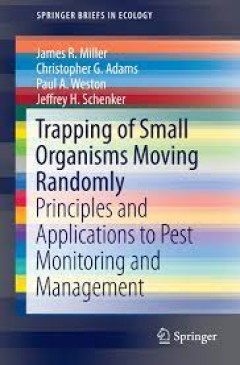
Trapping of Small Organisms Moving Randomly Principles and Applications to P…
This new book is the first to make logical and important connections between trapping and foraging ecology. It develops and describes—both verbally and mathematically--the underlying principles that determine and define trap-organism interactions. More important, it goes on to explain and illustrate how these principles and relationships can be used to estimate absolute population densities i…
- Edition
- -
- ISBN/ISSN
- 978-3-319-12994-5
- Collation
- -
- Series Title
- -
- Call Number
- -
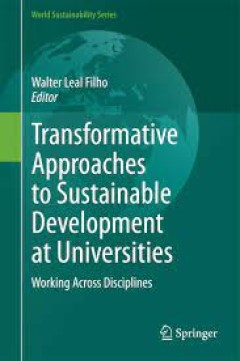
Transformative Approaches to Sustainable Development at Universities Working…
This book documents and disseminates experiences from a wide range of universities, across the five continents, which showcase how the principles of sustainable development may be incorporated as part of university programmes, and present transformatory projects and programmes, showing how sustainability can be implemented across disciplines. Sustainability in a higher education context is a fa…
- Edition
- -
- ISBN/ISSN
- 978-3-319-08837-2
- Collation
- -
- Series Title
- -
- Call Number
- -
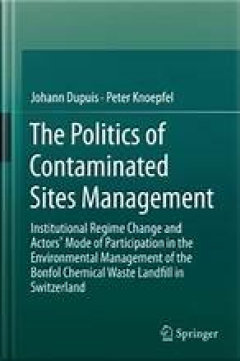
The Politics of Contaminated Sites Management
By the end of the 1970s, contaminated sites had emerged as one of the most complex and urgent environmental issues affecting industrialized countries. The authors show that small and prosperous Switzerland is no exception to the pervasive problem of sites contamination, the legacy of past practices in waste management having left some 38,000 contaminated sites throughout the country. This book …
- Edition
- 1
- ISBN/ISSN
- 978-3-319-11307-4
- Collation
- XIX, 159, 20 b/w illustrations, 8 illustrations in colour
- Series Title
- -
- Call Number
- -
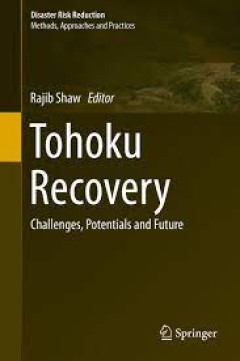
Tohoku Recovery Challenges, Potentials and Future
The March 11 disaster in 2011, known as the Great East Japan Earthquake and Tsunami, caused extensive damage in various sectors. Through the recovery process, special lessons are being learned and applied in the affected region. This book attempts to draw lessons from different issues and sectors such as policy perspectives (both national and local), the role of international NGOs, fishing indu…
- Edition
- -
- ISBN/ISSN
- 978-4-431-55136-2
- Collation
- -
- Series Title
- -
- Call Number
- -
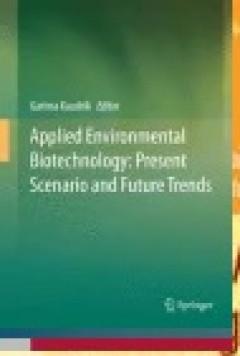
Applied Environmental Biotechnology: Present Scenario and Future Trends
Applied Environmental Biotechnology: Present Scenario and Future Trends is designed to serve as a reference book for students and researchers working in the area of applied environmental science. It presents various applications of environmental studies that involve the use of living organisms, bioprocesses engineering technology, and other fields in solving environmental problems like waste an…
- Edition
- Ed. 1
- ISBN/ISSN
- 978-81-322-2123-4
- Collation
- XVI, 167
- Series Title
- -
- Call Number
- 628 APP a
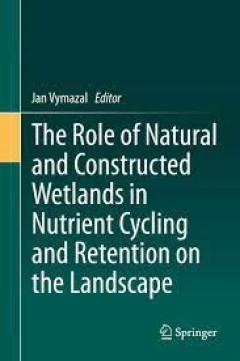
The Role of Natural and Constructed Wetlands in Nutrient Cycling and Retentio…
Natural and constructed wetlands play a very important role on the landscape and their ecological services are highly valuable. In fact, some wetland types are regarded as one of the most valuable ecosystems on the Earth. Water management, including flood water retention, biomass production, carbon sequestration, wastewater treatment and biodiversity sources, are among the most important ecolog…
- Edition
- -
- ISBN/ISSN
- 978-3-319-08177-9
- Collation
- -
- Series Title
- -
- Call Number
- -
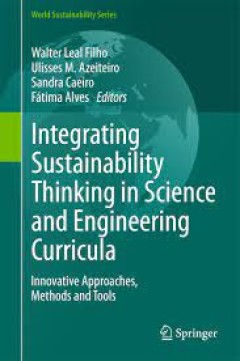
Integrating Sustainability Thinking in Science and Engineering Curricula Inn…
Including considerations of sustainability in universities’ activities has long since become mainstream. However, there is still much to be done with regard to the full integration of sustainability thinking into science and engineering curricula. Among the problems that hinder progress in this field, the lack of sound information on how to actually implement it is prominent. Created in order…
- Edition
- -
- ISBN/ISSN
- 978-3-319-09474-8
- Collation
- -
- Series Title
- -
- Call Number
- -

Wind and Wildlife Proceedings from the Conference on Wind Energy and Wildlif…
This book gathers papers presented and discussions held at the Conference on Wind Energy and Wildlife Impacts in Melbourne, Australia on 9th October 2012. The purpose of the conference was to bring together researchers, industry, consultants, regulators and Non-Government Organizations to share the results of studies into wind farm and wildlife investigations in Australia and New Zealand. The a…
- Edition
- -
- ISBN/ISSN
- 978-94-017-9490-9
- Collation
- XX, 151
- Series Title
- -
- Call Number
- -
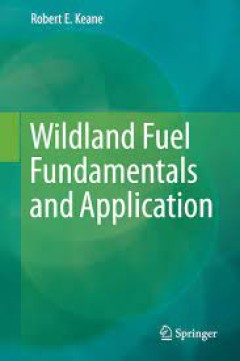
Wildland Fuel Fundamentals and Applications
A new era in wildland fuel sciences is now evolving in such a way that fire scientists and managers need a comprehensive understanding of fuels ecology and science to fully understand fire effects and behavior on diverse ecosystem and landscape characteristics. This is a reference book on wildland fuel science; a book that describes fuels and their application in land management. There has nev…
- Edition
- -
- ISBN/ISSN
- 978-3-319-09015-3
- Collation
- XI, 191
- Series Title
- -
- Call Number
- -
 Computer Science, Information & General Works
Computer Science, Information & General Works  Philosophy & Psychology
Philosophy & Psychology  Religion
Religion  Social Sciences
Social Sciences  Language
Language  Pure Science
Pure Science  Applied Sciences
Applied Sciences  Art & Recreation
Art & Recreation  Literature
Literature  History & Geography
History & Geography